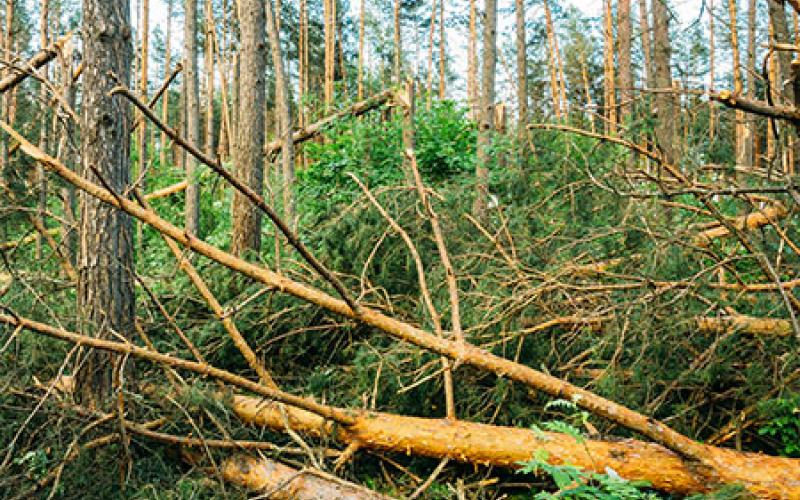Do disturbed forests adapt better to climate change?

Do disturbed forests adapt better to climate change?
Forests cannot adapt quickly to climate change A new study shows how disturbances can make forests more resilient to the changing climate.
Thom, Dominik; Rammer, Werner; Seidl, Rupert. “Disturbances catalyze the adaptation of forest ecosystems to changing climate conditions.” Global Change Biology 23 (2017): 269-282. DOI: 10.1111/gcb.13506
Hurricanes. Wildfires. Bark beetle outbreaks. Natural disturbances are typically perceived as harmful to forests. However, one theory suggests that disturbances provide the opportunity for forests to adapt to climate change. The climate in which a tree begins growing today might be vastly different from the climate it experiences at the end of its lifetime. Scientists consider the changing climate to be a threat against forests because, unlike animals, trees cannot migrate quickly to more favorable environments. This puts forests at a greater risk for species extinction and biodiversity loss. Forests that are maladapted to new climates may also lose functionality — the ability to provide resources and services to humans.
So how can disturbances also mitigate the effects of climate change? In a recent study, Dominik Thom and his colleagues from the University of Natural Resources and Life Sciences in Austria address this question. Writing in the journal Global Change Biology, they set out to test the hypothesis that forests can adapt more quickly after a disturbance because of an increase in resources (such as light and nutrients), and a decrease in competition among trees for those resources. The changes to forest composition that take place after a disturbance, that hypothesis suggests, should therefore accelerate their adaption to climate change and promote biodiversity.
To see if disturbances help forests adapt more quickly Thom and his fellow researchers used a forest landscape and disturbance model called “iLand” to simulate disturbances in Kalkalpen National Park (KANP), the largest forest wilderness in Austria. The researchers ran simulations under four different climate projections, and each projection had nine different disturbance events that differed in frequency, severity, and size. The disturbance events were simulated over a span of 1,000 years to assess how quickly the KANP forests might adapt to projected climates. Their study argues that disturbances should be considered as viable options in the effort to protect forest health.
The researchers found the forests of KANP needed between 357 and 706 years to adapt to new climates — but disturbances helped accelerate that process by up to 211 years. However, not all simulations showed the same result. On the one hand, the forests adapted quicker when they were disturbed more frequently and severely. On the other hand, they adapted slower when the size of the disturbance was increased and affected a larger forest area. According to the researchers, large disturbances weakened the forests’ ability to adapt to climate change because it exacerbated the loss of diversity across the landscape.
Loss of diversity among tree species due to climate change is a concern for forest managers. In this study, the researchers found that smaller disturbances partially offset this effect because they promoted biodiversity across the landscape. In the case of KANP forests, early successional species — “pioneer” species that first start growing on a disturbed site — flourished. Therefore, a balance between disturbed and undisturbed forests across the landscape is key to promoting biodiversity.
Climate change is expected to alter environmental conditions over the lifetime of a single tree. This study showed how disturbances can speed up the process in which forests respond to climate change and help promote biodiversity. Moving forward, it will be important for forest managers to consider disturbances in their plans as the climate changes at a rapid rate; disturbances can be viewed as opportunities to aid forests under global climate change rather than threats to be avoided.




